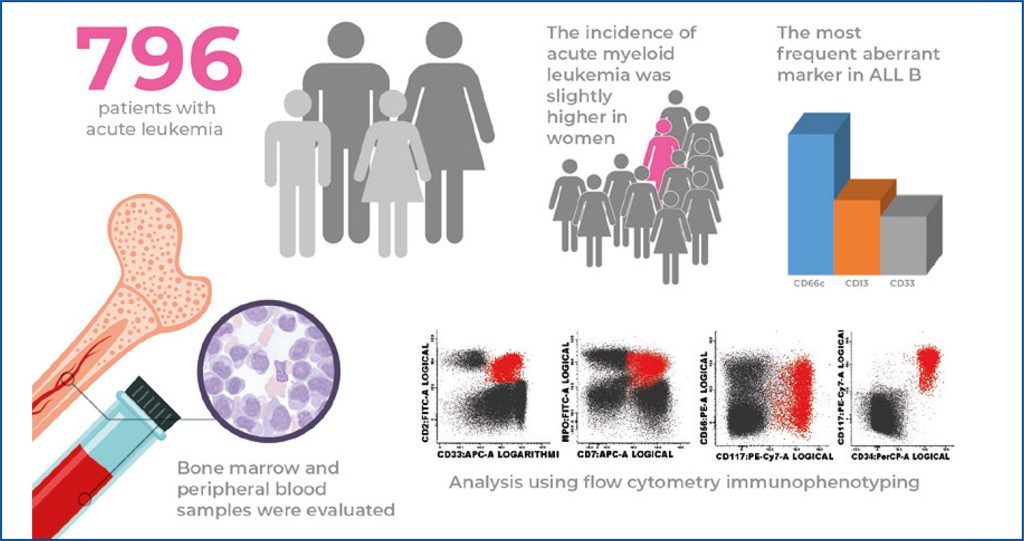einstein (São Paulo). 19/Dec/2022;21:eAO0117.
Immunophenotypic characterization of acute leukemias in Bahia, Brazil
DOI: 10.31744/einstein_journal/2023AO0117
Highlights
The incidence of acute myeloid leukemia was slightly higher in women.
The most frequent aberrant marker in B-cell ALL was CD66c, followed by CD13 and CD33.
Expression of CD34, HLA-DR, CD13, MPO, CD15, CD64, CD2 and CD7 was different in the non-APL and APL AML groups.
Differences in expression of CD10, CD13, CD33, CD66c and CD34 were observed in different age groups with B-cell ALL.
ABSTRACT
Objective
To characterize the immunophenotypic profile of acute leukemias in the population of the state of Bahia, Brazil.
Methods
This is a descriptive, retrospective study. From 2014 to 2018, 796 new cases of acute leukemia were evaluated. The data were obtained from analysis of reports and records of tests performed by flow cytometry immunophenotyping. All individuals of all age groups diagnosed as acute lymphoblastic leukemia or acute myeloid leukemia were included in the study. Demographic variables and expression of leukemia antigens were evaluated.
Results
Most cases were diagnosed as acute myeloid leukemia and 42.7% as acute lymphoblastic leukemia. Significant differences were found in expression of markers in acute leukemias when age groups were compared, as well as in demographic characteristics. B-cell acute lymphoblastic leukemia was more prevalent than cases of T-cell origin. Assessing the aberrant markers in acute myeloid leukemias, the non-acute promyelocytic leukemia group presented expression of CD7 and CD56 as the most frequent ones. In B-cell acute lymphoblastic leukemia, the most frequent aberrant markers were CD66c, CD13 and CD33.
Conclusion
Significant differences were found as to several antigens when comparing adults and children, and these findings may contribute to future studies correlating the phenotypic profile to genetic characteristics and therapeutic response, including specific antigen therapies, which may be better targeted.
389

